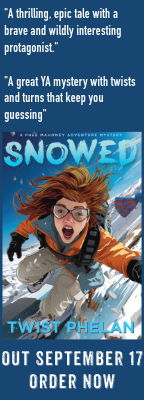by Mallory Moad
The year 2020 will no doubt be remembered as one of the worst ever. It’s been a stressful, divisive time, with Covid-19 in the forefront, putting our resiliency and sanity to the test.
One field that has been hit particularly hard by mandatory shutdowns and sheltering in place is the performing arts. Plays and concerts – national, regional and local – have been postponed indefinitely and production schedules for movies and television shows have been scrambled. But students of the performing arts are facing an even more precarious situation: how do you practice and perfect your craft when all your usual outlets have vanished?
Fresno City College acting instructor, Janine Christl, sensed her students’ frustration and anxiety when distanced learning was imposed. Her solution to the disruption was a filmed piece, what she refers to as a “distanced documentary,” that addressed their feelings about the issue in their own words. “The goal was to give students a voice in a challenging and ever changing period of history,” Janine says. In a nutshell, the five-episode film, which Janine directed, is about what it’s like being a student of the arts during the pandemic, from the point of view of the students themselves. Through dance, drama, music, visual art, and spoken word, these young performers express themselves with honesty, beauty, strength, and in-your-face emotion.
Nineteen students collaborated on the film. Ten of them are performers who appear before the camera; the rest are videographers, writers, music coordinators, and designers. The film’s title, 19 represents more than just the number of people who participated in the project. Janine explains, “We were hearing about Covid-19 every day, so I thought it would be nice to focus on nineteen artistic collaborators instead of constantly thinking of nineteen as something dangerous. It was a way to take back the number.”
19 is not a typical documentary. There are no close-up head shots of experts, no graphs or statistics, and no celebrity voice-over narration. Instead, the five short episodes center on ten students and were filmed, for the most part, by those students alone. From May through August, they shot their stories using their own phones and cameras, and the results are realistic and raw. According to Janine, “The students used whatever was available,” and unavoidable changes from one format to another only added to the realism. “It’s not packaged neatly but a slice of real life.” Filming took place inside and outside, in homes and on bare stages, in back yards and bedrooms. “Our stories became more personal as we met each other’s pets and families and saw living rooms and PJs.”
Although there is no definitive arc that ties the five parts of 19 together, with ten student performers and just five episodes, there is some blending of stories. While some are short and some are longer and more complex, the aim was to maintain the authenticity of each student’s truthful exploration of art and life during a time of uncertainty.
Rachel Henderson found out about 19 when she attended an actor’s workshop class last spring. Although she considers herself an actor (and rightfully so – she’s been involved with theatre since the age of twelve), she chose to organize an audience-interactive piece as her contribution. Her “Sidewalk Positivity Project” was a community outreach event that was a combination of visual art and a block party. “I knew I wanted to focus on positivity and creativity,” she says. But as the project developed she became aware of something more valuable than producing a sidewalk chalk mural: the power of community, especially during a time of crisis. “This project has made me reflect on why I love the arts so much. I felt very happy seeing my friends and meeting hew people. I definitely want to continue this and be able to connect, have people recognize talents they didn’t know they had, and most of all, have fun.”
Shelby Plaugher has a broad background in the arts. As she puts it, “I’m a Jack of all (or several) trades and master of none. I have had the privilege of dabbling in many different art scenes throughout my life.” Her segment in “19” involves dance and spoken word. Although at first she found working with the loose structure difficult (nothing in the film is scripted in the traditional sense), she eventually came to appreciate the freedom it gave her. “Almost all of the dance work was improvised, almost all of the speaking footage is extemporaneous. Circumstance, providence perhaps, rather than extensive foresight resulted in the final body of material.” Shelby describes her experience working on “19” as being “like a time capsule of a season where it is unclear whether skills like dance are transitory, or vital, or both in a time of closed performing venues and deeply personal spiritual turmoil.”
Rachel and Shelby weren’t the only ones who were profoundly affected by the process of working on 19. Janine found the students’ work to be inspiring, but not just their performances. It was their unconventional, think-outside-the-box methods that made an impact. “There were difficult times when I thought, ‘How is this going to work?’, and I found them finding the way. I realized that our creative minds help us not only to adapt but find new ways to thrive.”

One more – Everyone was invited to take part in Rachel Henderson’s Positivity Project (Fresno City College/Rachel Henderson)
19 is part of the Fresno City College Theater and Dance Department’s virtual season. The five episodes will premier on separate dates and although streaming is free, reservations are required for access. For more information, visit 19@wehavevoices on Facebook or fcc-theatre-box-office.eventbrite.com.
My name is Mallory Moad, and I believe art is what gets us through rotten times.

















I attended many dance & theatre classes at Fresno City College as I began my entertainment career which has been fairly productive & still active!